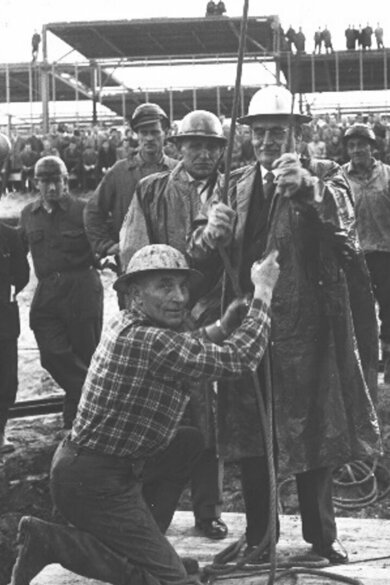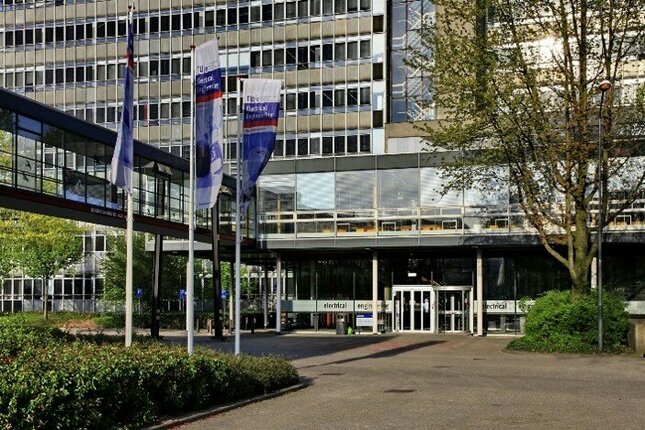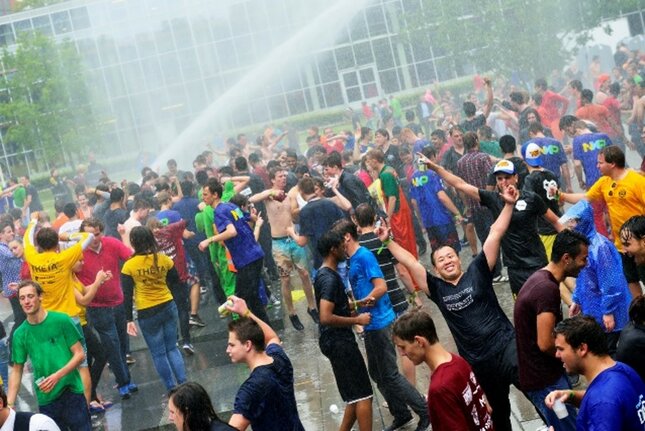
Industry
In 1945 the Netherlands starts out on a long journey of reconstruction after the ravages of World War 2. The population of the country increases strongly, creating a huge demand for housing and employment. Also, as a consequence of decolonization, the Netherlands must thoroughly redevelop its economy. The focus shifts from overseas trade to industry.
University
To facilitate this reconstruction and transformation, the Netherlands will require many highly educated scientists and technicians. Therefore the government decides to establish a second university of technology in addition to the one already existing at Delft. Experts carry out a thorough investigation into possible locations for such an institution. The southern provinces, where most industries are concentrated, seem to be the best option. Several cities and towns in the provinces of North Brabant and Limburg therefore submit proposals. The city that is eventually selected is Eindhoven, the largest industrial center in the south of the Netherlands.
Establishment
Eindhoven University of Technology, known today as TU/e, is established in 1956. The first courses begin in September 1957, and in that same year Queen Juliana officially opens the new institution. At the time of its beginning, TU/e offers courses in chemical engineering, electrical engineering and mechanical engineering. Through the years education expands and diversifies strongly, resulting in the nine present-day departments.

Innovative campus
One of the main selling points which Eindhoven has highlighted in its bid for the new university is a superb terrain near the city center and the railway station. The marshy and therefore hitherto undeveloped tract of land becomes a hive of building activity that results in a new and innovative campus. Architect Sam van Embden designs buildings for classrooms, laboratories, libraries etc. that are interconnected by aerial bridges. His aim is to create an environment in which students and employees may move around and meet one another with ease.

Growth
Right from the start, the new university grows rapidly. Beginning with a modest 200 students, the institution develops towards a population of some 12,000 students and 3,000 staff (including approx. 2,000 scientific staff) by the early 2020s.
High level
Education and research at TU/e reach a high level. Internationally renowned scientists include Edsger Dijkstra (computer science), Alexandre Horowitz (mechanical engineering) and Bert Meijer (chemical engineering). Top-level research institutions are established like Eurandom (statistics, probability science), EESI (embedded systems), and ICMS (complex molecular systems).

Social
But from the very beginning also, TU/e has strived not only to enable students to develop scientifically, but in a broader social way as well. To that end, Studium Generale has offered a broad array of cultural activities, discussion meetings etc. throughout the years. Student life has blossomed in Eindhoven. For many years various student associations had their homes in the building that became known as ‘De Bunker’. In more recent times student associations have moved into the inner city, creating an atmosphere of a true ‘student town’ in Eindhoven.
Collaboration
TU Eindhoven has always had a positive attitude towards research in collaboration with the business community. Contract research ordered by commercial firms constitutes an important source of income, and the importance of knowledge valorization is rising steadily. International contacts are becoming ever more essential, and increasing numbers of students, researchers and teachers come from abroad. For students, spending part of their university days outside the Netherlands has become a matter of course.

Brainport
An important development in the early decades of the 21st century was the role which TU/e took on in the development of the Eindhoven region into what has become known as the Brainport. The Eindhoven region has become internationally recognized as a major hub of economic, industrial and scientific innovation.
Development
The TU/e campus has undergone a process of considerable change in the previous and ongoing decade. 2012 saw the inauguration of MetaForum, a completely renovated and partly new building for the university library and various facilities for students. In 2020 the former Main Building was inaugurated as the present-day Atlas after a major redevelopment. Buildings for housing students and staff are being developed on various spots on the campus. TU/e is becoming a truly internationally oriented university where people from many countries find a pleasant environment for study, work, living and leisure.